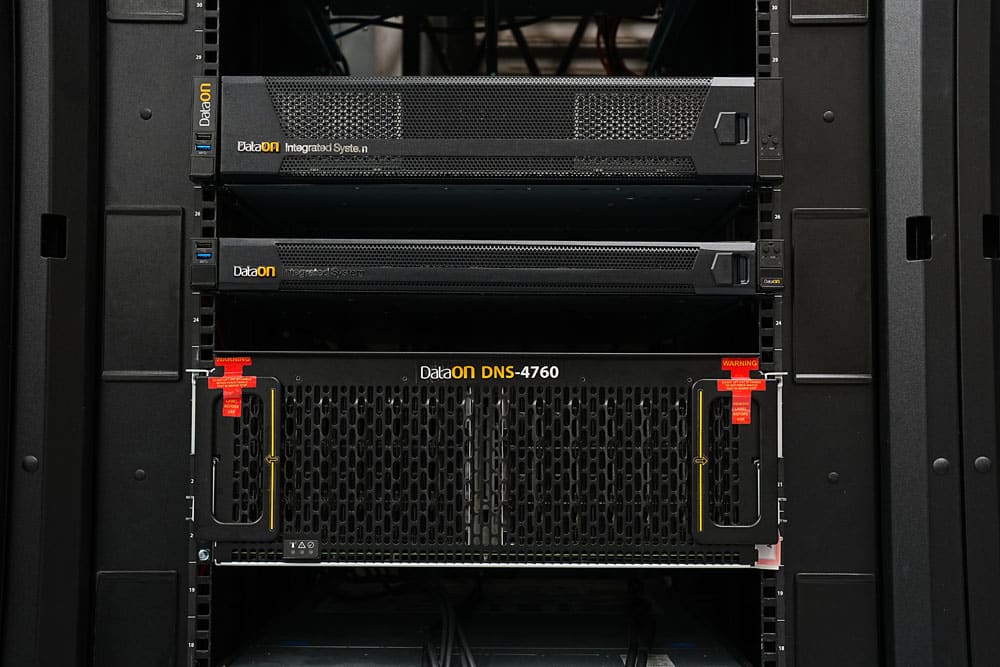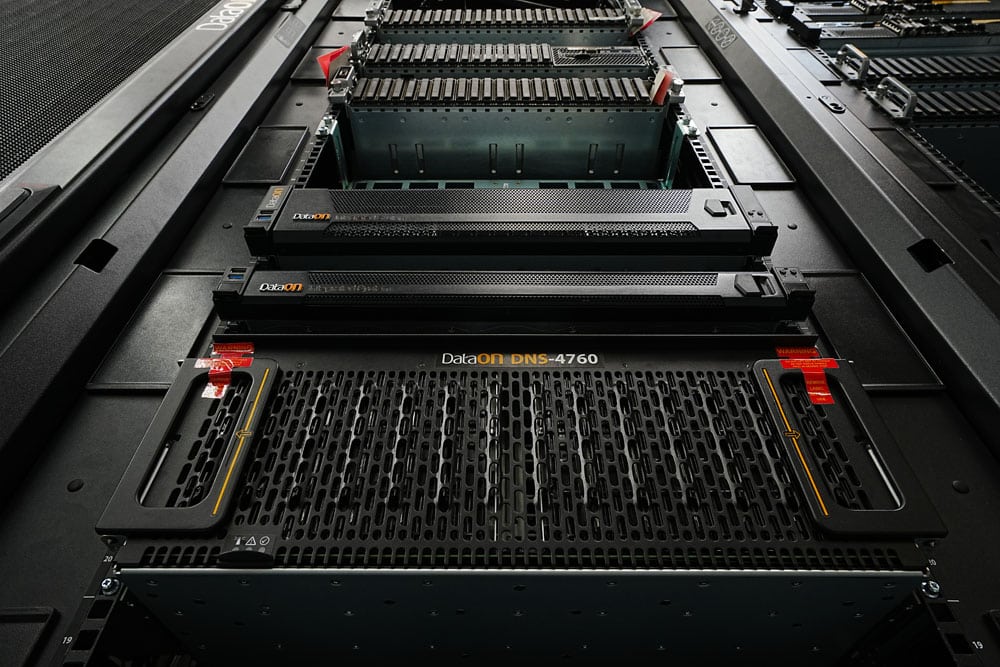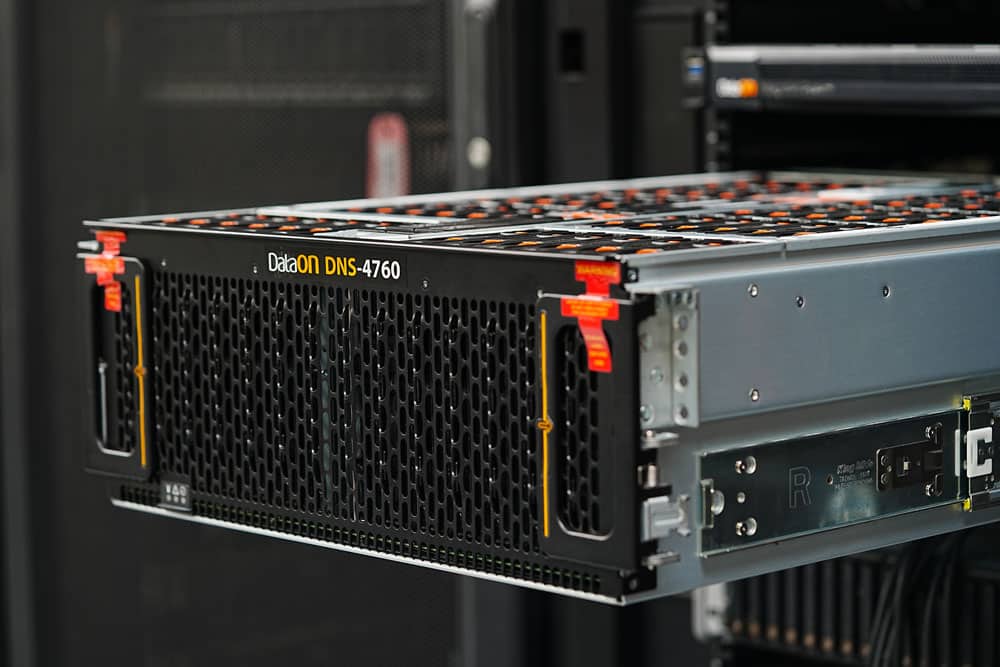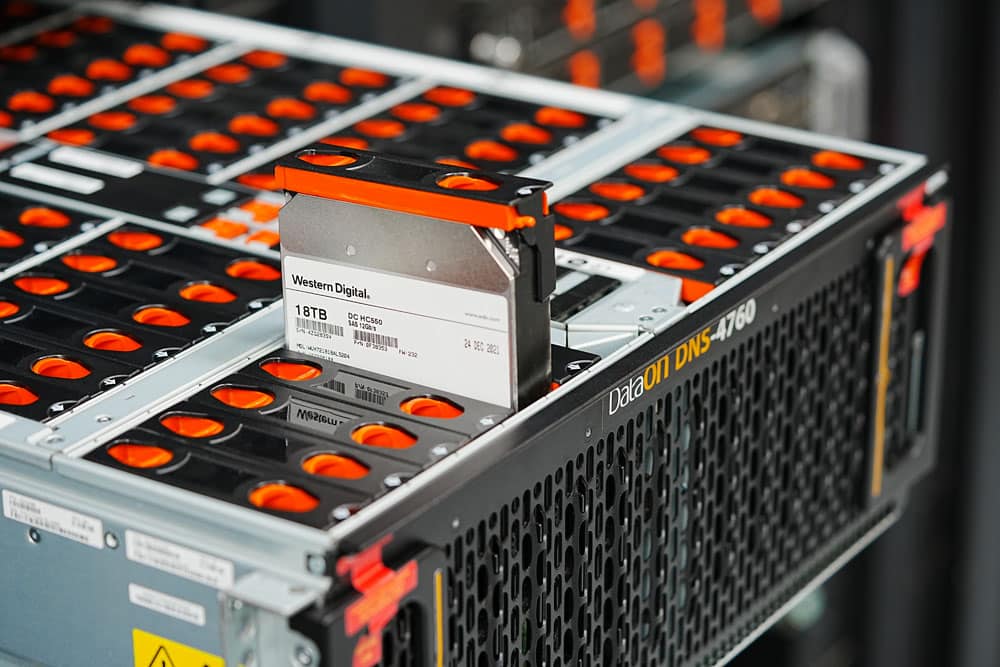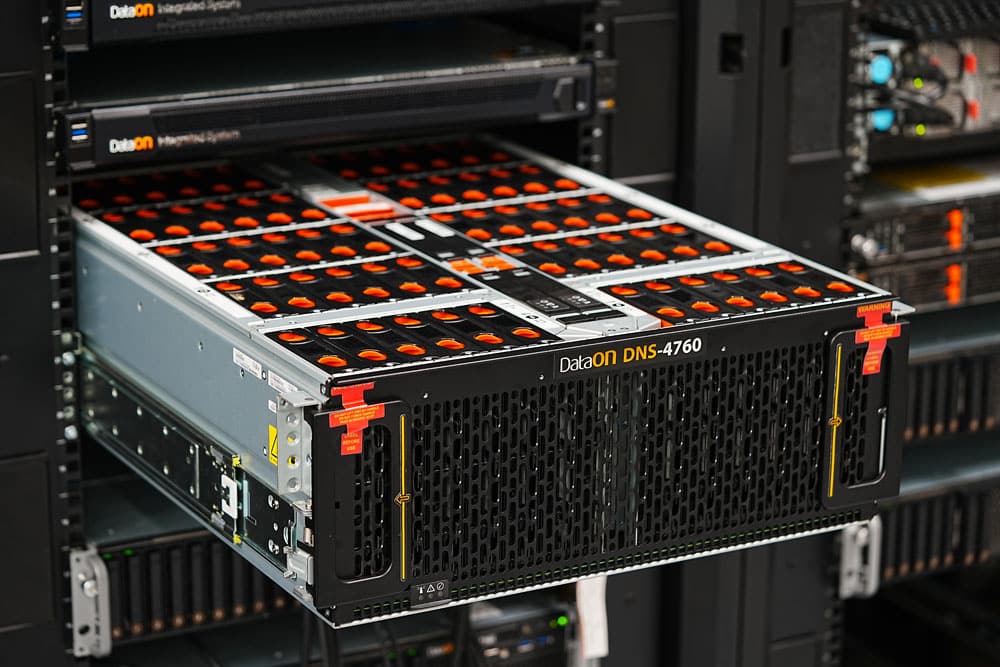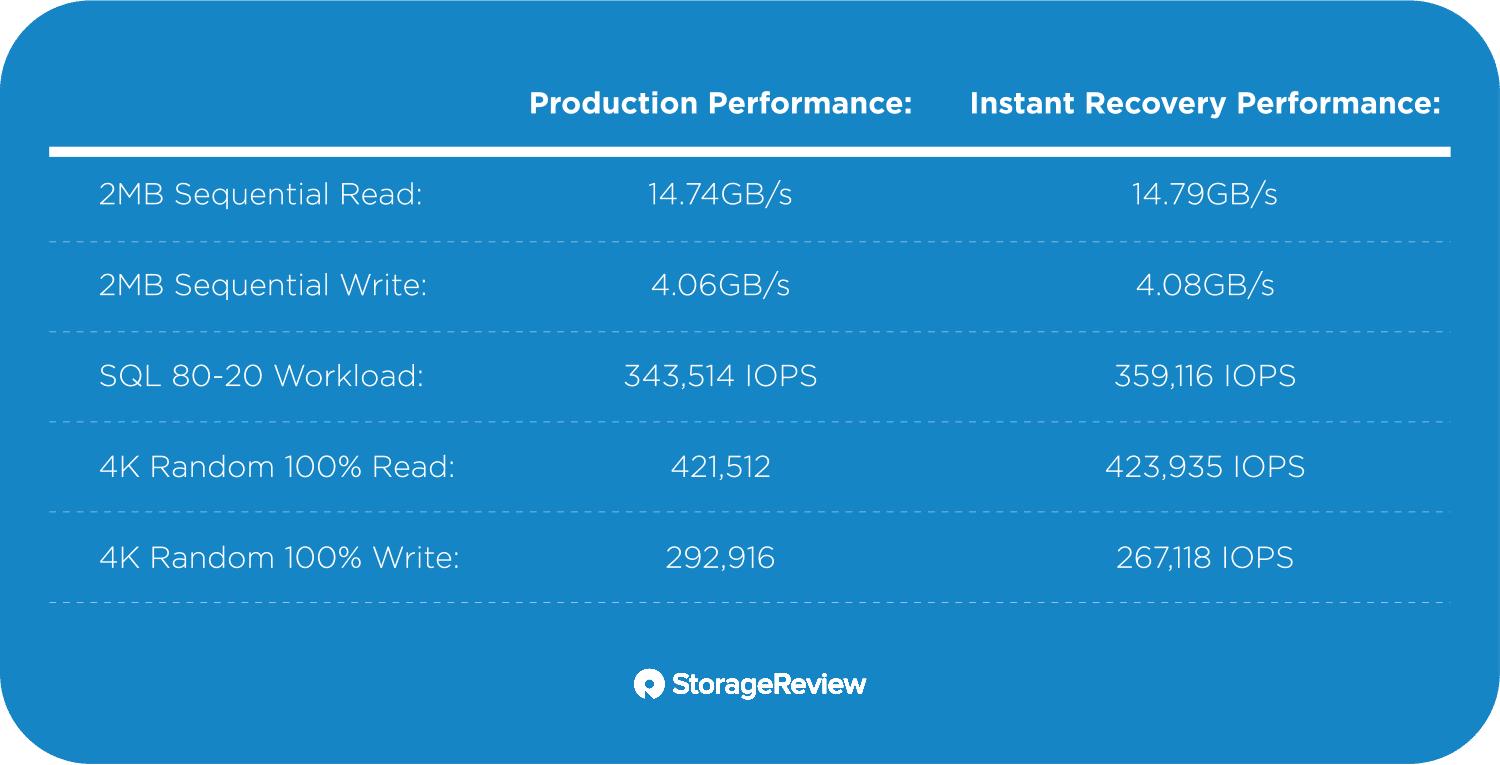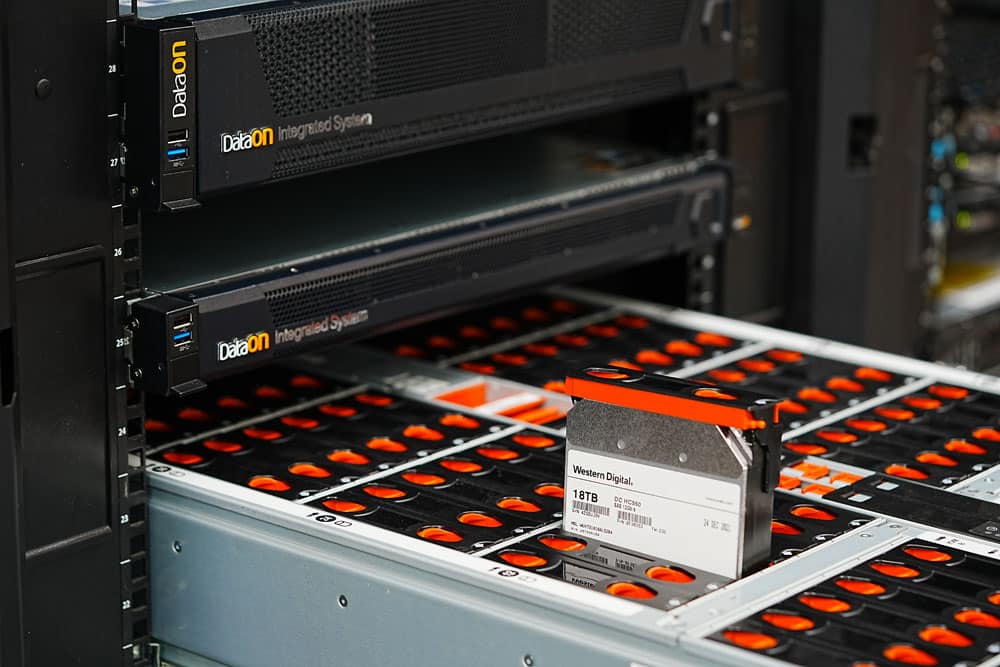There are numerous benefits to deploying a hyper-converged infrastructure (HCI) system: scalability, performance, flexibility, security, and in most cases, management. An HCI deployment is suitable for edge, remote, or branch-office environments or large enterprises with the ability to easily scale storage requirements from TBs to PBs. Even more importantly, HCI can be rolled out on-premises, in a public cloud, or as an integrated hybrid solution. In fact, many customers use the same architecture for mass storage in PBs while running a VM solution.
There are numerous benefits to deploying a hyper-converged infrastructure (HCI) system: scalability, performance, flexibility, security, and in most cases, management. An HCI deployment is suitable for edge, remote, or branch-office environments or large enterprises with the ability to easily scale storage requirements from TBs to PBs. Even more importantly, HCI can be rolled out on-premises, in a public cloud, or as an integrated hybrid solution. In fact, many customers use the same architecture for mass storage in PBs while running a VM solution.
These same systems can be deployed in a high-availability (HA) HCI configuration where the backup and instant restore are possible on the same platform. Azure Stack HCI offers an HA solution where it’s possible to scale to PBs of storage while experiencing high performance. There are quite a few backup and recovery solutions available on the market today. Azure Stack HCI has a few listed on the Marketplace, but for this review, we used Veeam Instant Recovery software. Tools such as this both modernize and accelerate disaster recovery plans, ensuring the immediate availability of a single VM or an entire data center.
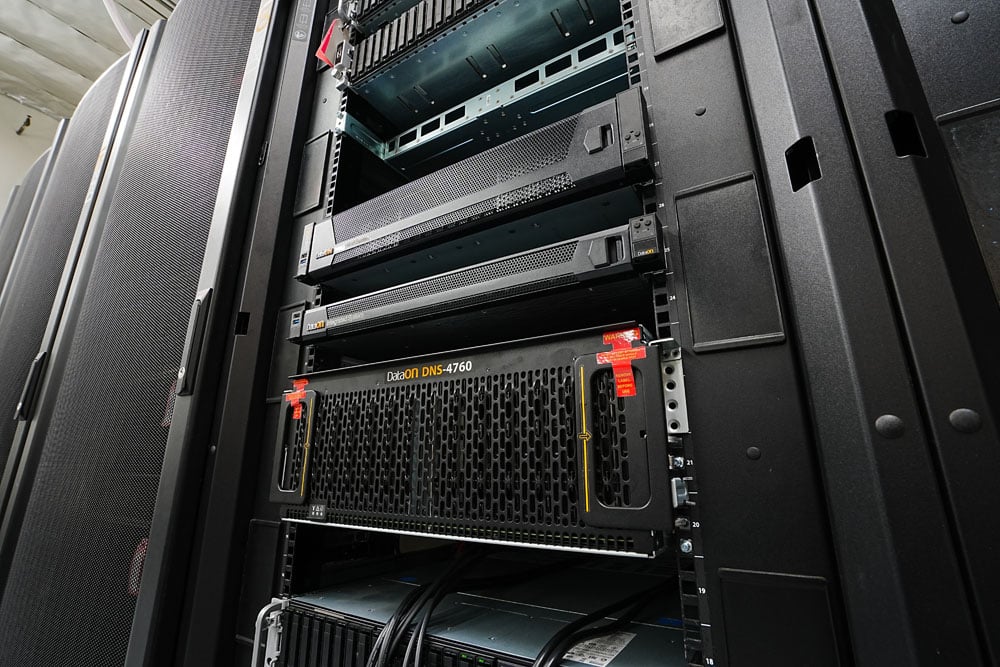
Although backup and disaster recovery are typically two related, but separate notions, there’s the infrastructure backing up the data center, and then there’s the offsite infrastructure to failover to in the event of a disaster. The concept we’re exploring here is a little bit of a hybrid, essentially empowering the backup infrastructure to do more than it has in the past. In this model, the infrastructure can serve as a traditional target but configured with enough oomph, it can also serve as an on-prem DR site. This buys backup admins time while they evaluate the severity of the attack, outage, or mistake that’s led to the current problem. Getting enough power to run VMs at scale in a backup appliance is architecturally tricky, though, which is why HCI provides an interesting path.
HCI solves a lot of problems in the data center. It’s simple to deploy and manage, but scalability can be a problem in many architectures. With vSAN, for instance, storage and compute are coupled together, making it an inefficient choice for this role, that’s even forgetting about the cost for the moment. Thankfully, there are other options.
Azure Stack HCI Backup and Instant Recovery
DataON is a leading provider of Azure Stack HCI solutions. We’ve worked with them many times, most recently near the end of last year when we checked out their latest appliances. For this particular use case, though, DataON has put together something that’s pretty interesting. They’re using a pair of their HCI appliances for HA, coupled with a 60-bay Western Digital JBOD. The result is high-capacity storage that is resilient, cost-effective, and can be configured to meet any performance or capacity need.
Get a fully integrated appliance-like experience with a DataON AZS-6112 for Azure Stack HCI. Optimized for size & performance with all-NVMe flash storage, it delivers the fastest time-to-value through the convenience of pre-installed software, integrated drivers, and firmware updates. Simple to deploy and procure, it’s ideal for customers who require turnkey solutions with little deployment effort from IT staff.
DataON combines Intel technology and Azure Stack HCI software to provide a platform for data center modernization. Together they enable organizations to modernize their infrastructure, start or extend their hybrid cloud journey, and consolidate virtualized workloads.
| DataON AZS-6112 | DataON K2N-216 | |
| Specifications | ||
| Profile/Optimization | All NVMe Flash/Size & Performance | All-NVMe flash Balanced |
| Form factor | 1U/1-Node Rack | 2U / 1-Node rack 16X 2.5″ |
| Drive Bay Configuration | 12x 2.5″ NVMe U.2 | 16x NVMe U.2 |
| PCIe Slot | 2x PCIe 4.0×16; 1x PCIe 4.0 x8 | 7x PCIe 3.0 x8; 2x PCIe3.0 x16 + 3x PCIe 3.0 x8 |
| Max TDP/PSU | 270W / Dual 1300W @100-240V; Optional 1600W or 2100W | 165W |
| Scalability | 2 to 16 Nodes per cluster | 2 to 16 nodes per cluster |
| Configuration | ||
| Processor | 3rd Gen Intel® Xeon® Scalable processors | 2nd Gen Intel® Xeon® Scalable processors |
| Number of Cores | Dual socket, up to 80 cores per node | Dual socket, 16-48 cores per node |
| Memory | Up to 12TB DDR4 3200 MT/s DIMMs / 32 slots (per node) | 128GB to 1.5TB DDR4 2933MHz per node |
| Cache Tier | N/A | Intel® Optane™ Persistent Memory or Optane™ NVMe SSD |
| Capacity Tier | NVMe SSDs | NVMe SSDs |
| Resiliency | 2-way mirror, nested 2-way mirror, nested mirror-accelerated parity, 3-way mirror, mirror-accelerated parity | |
| Onboard Network Ports | 2x 10GbE RJ45 OCP mezzanine (per node) | 2x 10GbE RJ45 |
| Add-on Networking Card | 2x 25GbE SFP28 or 2x 40/50/100GbE QSFP 28/58 2-port RDMA per node | 2x 25GbE SFP28 or 2x 40/50/100GbE QSFP 28 dual port RDMA |
| Networking Switch | 2x 18/32-port SFP28 25GbE; 2x 32-port QSFP 100GbE; or switchless | |
The AZS-6112 is powered by 3rd Gen Intel® Xeon® Scalable processors.
Western Digital Ultrastar Data60
Cloud providers are cautious when selecting products and solutions that will service their customer’s needs and get deployed in their infrastructure. Western Digital’s Ultrastar Data platform is designed and built to meet strict US Federal Government requirements allowing the products to be included in the approved TAA list. What does this mean? TAA compliance will enable products to be sold via specific government channels, and specific models meet FIPS 140-2 offering increased assurances for secure environments. The TAA restricts government procurement of goods and services to manufactured or wholly transformed products in the U.S. or a TAA-designated country. You can find out more on the GSA and TAA government websites.
Requirements to Get a GSA Schedule
Adequate Financial Resources
Provide Profit and Loss Statements and Balance sheets for 2 fiscal years (unless enrolled in the Springboard IT Program).
Been in Business for 2+ Years
Minimum of 2 years in business unless you are eligible for the Springboard Program, applicable to specific IT companies.
Compliance with the Trade Agreements Act (TAA)
All products must be substantially transformed in a TAA-compliant country.
DUNS Number and Active SAM.gov Registration
Obtain a DUNS Number from Dun & Bradstreet, and then you can register on SAM.gov. Both of these are required before you get a GSA Schedule.
Integrity and Business Ethics
Must have a satisfactory record of integrity and business ethics.
Sell Your Solutions Commercially
All products and services must have been sold before and must be commercially available. You must also provide invoicing support to show you have offered each product and/or service commercially.
Past Performance
Compliance with the required or proposed delivery or performance. This generally means a minimum of 1 project write-up per Special Item Number (SIN) from the past 2 years, or a project that has been on-going for a minimum of 1 year.
Fair and Reasonable Pricing
Must provide fair and reasonable pricing, meaning discounts equal to or better than your Most Favored Customer (MFC). You must also demonstrate you have Commercial Sales Practices in place to monitor the discounting of your MFC.
Ultrastar Data60 is key to next-generation disaggregated storage and SDS
The Ultrastar Data60 storage platform is a key element of next-generation disaggregated storage and Software-Defined Storage (SDS) systems. The Ultrastar Data60 provides up to 1.2PB of raw storage using the WD 20TB SMR HDDs in a compact form factor and addresses the storage needs of large enterprise customers, storage OEMs, and cloud service providers.
The Western Digital Ultrastar Data60 employs IsoVibe™ Vibration Isolation Technology that provides a suspension for the drives in the chassis, isolating them from transmitted vibration resulting in a consistent performance. Utilizing ArcticFlow™ Thermal Zone Cooling Technology, forcing cool air into the center of the chassis, HDDs operate at lower and more consistent temperatures than conventional systems resulting in lower fan speeds reduced vibration, lower power consumption, quieter operation, and ultimately higher reliability.
The Ultrastar Data60 is optimized for applications and workloads running in SDS environments, Big Data, Private Cloud, Data Analytics, and Cloud Infrastructure.
The Data60 is managed by Western Digital Resource Manager, a GUI-based tool that enables real-time monitoring and management of the platform and provides a consolidated dashboard displaying the most critical information. Other views allow platform configuration, health monitoring, and maintenance.
| Western Digital Ultrastar Data60 | |
| Specifications | |
| Maximum Capacity | 1.2PB – raw capacity in 4U using 20TB SMR HDDs |
| Maximum # Drives | 60 x 3.5″ drive bays – Ultrastar HDDs (SAS or SATA) |
| Interface | SAS
SATA |
| Drive Type | HDD |
| Dimensions (L x W x H) | 28.03″ x 17.6″ x 6.89″ |
| Scalability | 2 to 16 Nodes per cluster |
| PSU | Enterprise-grade redundant and hot-swappable PSUs, I/O modules, and fans |
DataON and Veeam Instant Recovery
During disaster recovery, access to the backed-up data is the first step, and the second step is how to best leverage that data. If that data is inside a traditional backup appliance, chances are there will be a long recovery process accessing the data and trying to recover applications. Backup data is typically not residing on a storage appliance capable of running those applications. Veeam Backup and Recovery will help mitigate some of those issues with technologies such as Instant Recovery, allowing users to bring VMs and applications online immediately and keeping them online during a migration process to primary storage.
In our setup, we kept the backup storage close to our DataON Azure Stack HCI cluster through an attached Western Digital Ultrastar Data60. This provided the dense storage required for backups, with performant hosts on the front end capable of leveraging that storage in the event of a disaster recovery scenario. In such a situation, the most recent backups are restored with Instant Recovery, which allows them to run from the Ultrastar Data60 JBOD, with cache provided by the Azure Stack HCI cluster, and migrates live to production storage. While this process won’t fully replace the production storage performance capabilities, it helps to build a better bridge to get the applications online immediately, run well, and quickly move back to production storage.
In our scenario, we leveraged a production environment across 4x DataON AZS-6112 hosts, which backed up to a DataON Azure Stack HCI cluster running on 2x DataON K2N-216 hosts connected to the WD Ultrastar Data60 JBOD. The recovery Azure Stack HCI cluster was modestly-equipped with 2x Intel® Xeon® Bronze 3204 CPU @ 1.90GHz and 6 cores, 128GB of RAM, and 4x 1.5TB of Intel Optane SSDs. To test recovery performance, we built out 10 VMs, or 5 VMs per host, each having a raw data drive of 395GB of storage. These VMs each had 2 vCPUs, and 2GB of RAM assigned, with a focus on balancing CPU utilization on the recovery hosts. These VMs were brought online, and a 50GB workload was performed on each VM, simulating work during an Instant Recovery process before migrating the VMs back onto production storage.
With Veeam Instant Recovery, as the data is being used and writes come in, they go into a cache buffer which improves performance. We leveraged VMFleet to build our set of VMs and test them in a before and after scenario, first inside the production environment and next in our Instant Recovery environment. The performance we measured leveraging the direct-attached Western Digital Data60 JBOD to our DataON K2N-216 Azure Stack HCI cluster was phenomenal.
Initial read data was slower until new write activity brought data into flash, but once it was inside cache, the speeds matched the performance of our production environment.
Final Thoughts
The DataON Azure Stack HCI solution for backup and instant recovery ticks all the boxes for a solid, integrated HCI solution. The strong partnership with Microsoft, Western Digital, and Veeam delivers a resilient, cost-effective system that beats all other HCI HA solutions on the market today. This is a high-capacity storage system with configuration flexibility to satisfy on-prem, hybrid-cloud, or public cloud installations.
The flexible architecture of the DataON Integrated System delivers an optimized solution in size & performance with all-NVMe flash storage, including the convenience of pre-installed software, integrated drivers, and firmware updates. Simple to deploy and procure, it’s ideal for customers who require turnkey solutions with little deployment effort from IT staff.
DataON Integrated Systems are powered by 3rd Gen Intel® Xeon® Scalable processors, combining Intel® technology with Azure Stack HCI to provide a powerful platform for data center modernization. Together they enable organizations to modernize their infrastructure, start or extend their hybrid cloud journey, and consolidate virtualized workloads.
The DataON Integrated System architecture allows customers to scale up before having to scale out, making it cost-effective with plenty of room to grow. The solution was simple to implement and provided incredible numbers during our “instant recovery” when we erased our production drives, initiated recovery and migrated the VMs back to the production drives.
While most are familiar with dedicated backup appliances, the notion of a more flexible backup solution leveraging HCI isn’t as well known. Through this paper, we’ve shown how modern infrastructures can benefit from HCI which allows for flexibility in system design. With this kit from DataON we combined a number of technologies to deploy a high-performance, yet cost-effective, HCI backup and recovery solution.
To prove it’s not just an assembly of hardware, we put the DataON build to work with Veeam, targeting the performance of their Instant Recovery feature. The results are evident with our instantly recovered VMs performing the same on the Azure Stack HCI backup infrastructure as their primary location. While it can be argued that adding Optane SSDs to these systems is “unfair,” we would suggest a backup infrastructure that allows for such a thing is fantastic.
We’re in an era where organizations need to be able to do more than just backup and recover. Data availability is a business requirement in more and more use cases. Azure Stack HCI provides a tremendous opportunity for consolidation while still meeting expanding data-centric data needs.
DataON Integrated Systems for Azure Stack HCI
This report is sponsored by DataON. All views and opinions expressed in this report are based on our unbiased view of the product(s) under consideration.
Engage with StorageReview
Newsletter | YouTube | Podcast iTunes/Spotify | Instagram | Twitter | Facebook | TikTok | RSS Feed

